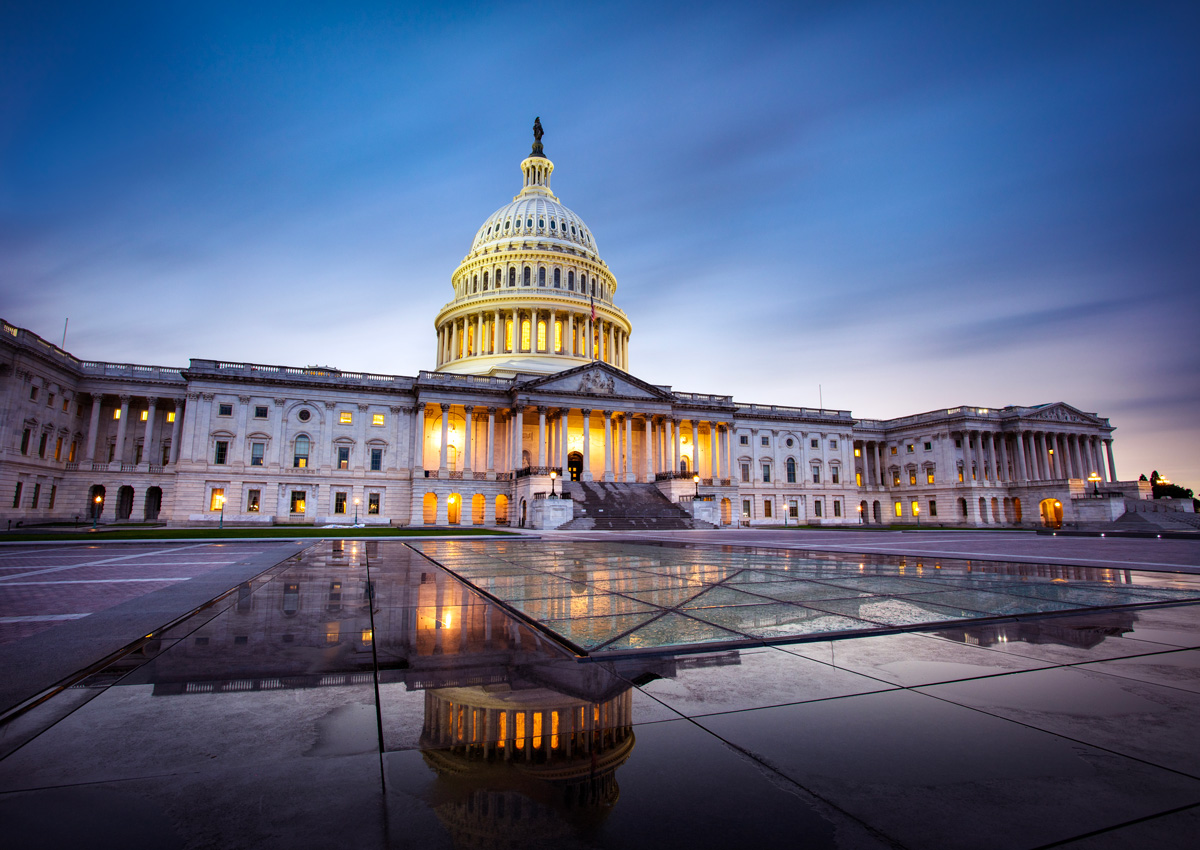
The One Big Beautiful Bill Act (OBBBA), signed into law July 4, 2025, introduces a wide range of updates that may affect your finances, your family or your business. It marks one of the most significant shifts in federal tax law since 2017, and while not every provision may apply to you, several are likely to influence long-term planning.
We’ve highlighted some of the most meaningful federal tax changes below, with a focus on how they may shape your long-term financial plan. While these provisions apply at the federal level, states will decide whether to conform.
This legislation builds on the 2017 Tax Cuts and Jobs Act (TCJA) making many tax provisions permanent and introducing new rules that could influence your financial strategy in meaningful ways.
Overview: What’s changing under the OBBBA?
The OBBBA represents the most sweeping tax overhaul since 2017. It makes permanent many of the temporary provisions introduced under the TCJA and adds new rules that affect individuals, families and businesses alike.
From expanded deductions to adjusted income thresholds and new planning limits, the law introduces wide-ranging and nuanced changes. Depending on your income, goals and where you live, some provisions may matter more than others. In the sections below, we highlight the updates that may impact you and your long-term financial plan.
What individuals & families should know
Many of the tax updates in the OBBBA bring more permanence to the landscape we’ve been navigating since 2017. For high-net-worth individuals and families, these changes may influence how you give, deduct and plan. Your high-net-worth tax strategy may benefit from a fresh look as some provisions expire and others expand.
While the core tax brackets and standard deductions remain familiar, the law introduces updates that affect charitable giving, state and local tax deductions and the treatment of itemized deductions for top earners. These provisions may call for refreshed strategies, or they may offer opportunities to take action before certain rules change.
TCJA items made permanent with minimal or no changes
Individual tax brackets: The individual tax brackets remain unchanged under the new law. Below are the 2025 tax rates with the applicable income thresholds, which will continue to adjust with inflation going forward:
| Tax Rates | Single | Head of Household | Married Filing Jointly (MFJ) |
|---|---|---|---|
| 10% | $0-$11,924 | $0-$17,000 | $0-$23,850 |
| 12% | $11,926-$48,475 | $17,001-$64,850 | $23,851-$96,950 |
| 22% | $48,476-$103,350 | $64,851-$103,350 | $96,951-$206,700 |
| 24% | $103,351-$197,300 | $103,351-$197,300 | $206,701-$394,600 |
| 32% | $197,301-$250,525 | $197,301-$250,500 | $394,601-$501,050 |
| 35% | $250,526-$626,350 | $250,501-$626,350 | $501,051-$751,600 |
| 37% | $626,351+ | $626,351+ | $751,601+ |
Standard deduction: The OBBBA sets the standard deduction at $15,750 for single filers and $31,500 for joint filers for 2025, inflating annually thereafter. For context, you may use the greater of your applicable standard deduction or your itemized deductions for purposes of reducing your taxable income.
State and local tax (SALT), mortgage interest and miscellaneous itemized deductions: See discussions in itemized deductions section below.
Child tax credit: The OBBBA increases the credit to $2,200 (inflating) per qualifying child with phase-outs at $200,000 (single) and $400,000 (MFJ) of income. Additionally, the OBBBA made permanent the refundability of this credit, allowing taxpayers who owe little to no tax to receive up to $1,700 as a tax refund in 2025 (inflating).
Taxpayers may continue to use the $500 Other Dependent Credit (ODC) from the TCJA for dependents that do not qualify for the Child Tax Credit, such as older children and elderly parents. This credit is made permanent under the OBBBA but does not inflate and cannot be refunded.
Personal exemptions: Are now permanently eliminated.
Qualified business income (QBI): The QBI changes may allow more service business owners to take the QBI deduction; however, the income phaseouts still apply at relatively low thresholds, so the deduction may not be material for higher earners.
Qualifying business owners of pass-through entities (for example, LLCs, partnerships, S corporations) can permanently deduct up to 20% of QBI. The deduction cannot exceed the greater of (1) 50% of W-2 wages paid by the business or (2) 25% of those wages plus 2.5% of unadjusted basis of depreciable property. The OBBBA expands the deduction limit phase-ins from $50,000 to $75,000 (single) and from $100,000 to $150,000 (MFJ). The OBBBA also adds minimum deduction of $400, inflation-indexed, for taxpayers with $1,000+ of QBI.
Alternative minimum tax (AMT) exemption: The increased AMT exemption and thresholds amounts of $88,100 (single) and $137,000 (MFJ) are now permanent, but the exemptions phase-out at levels of $500,000 (single) and $1 million (MFJ) of AMT income (inflating). Additionally, the phaseout is increased from 25% to 50% of the amount by which your AMT income exceeds the applicable exemption phaseout threshold.
Itemized deductions
How and when you choose to deduct can make a meaningful difference in your overall tax strategy. The OBBBA introduces new limits on deductions for high earners and expands others, like the SALT cap. For charitably inclined families, these updates may present both challenges and opportunities. It’s a good opportunity to revisit your giving plans and overall approach with your wealth manager.
Charitable deductions: Beginning in 2026, if you itemize your deductions, you’ll only be able to deduct charitable contributions that exceed 0.5% of your adjusted gross income (AGI). For example, if your AGI is $1 million and you donate $15,000 to a qualified charity, only $10,000 of that gift would be deductible. The first 0.5% ($5,000) doesn’t count.
The OBBBA also makes permanent the 60% AGI limit for cash gifts to public charities.
This change to the charitable gift deduction may make it worthwhile to accelerate some of your planned giving for the next several years to a donor advised fund (DAF) and/or private foundation in 2025 to avoid the 0.5% haircut.
Taxpayers who don’t itemize deductions may still deduct up to $1,000 (single) and $2,000 (MFJ) for charitable contributions.
State and local tax (SALT) deduction expansion (with phase‑out): From 2025 to 2029, the SALT deduction cap increases from $10,000 (under the TCJA) to $40,000. The expanded cap phases out for taxpayers with taxable income between $500,000 and $600,000, increasing by 1% per year. In 2030, the cap returns to $10,000.
State-level pass-through entity tax (PTET): The PTET — a valuable SALT workaround for eligible business owners — remains intact, despite proposals to eliminate it in earlier versions of the bill.
If you own a pass-through entity like an LLC, partnership or S corporation, this provision may help reduce your federal taxable income. Instead of paying state income taxes personally (and being limited by the SALT cap), your business can pay the taxes at the entity level and fully deduct them. This reduces the income that flows through to you. You’ll then receive a state tax credit for your share of the taxes paid by the entity.
To take advantage of this strategy, your state must offer a PTET regime and many high-tax states like California and New York do.
Mortgage interest deduction: The mortgage interest deduction continues to be limited to the first $750,000 of debt for home acquisition. The limit applies to first and second homes. Mortgages prior to December 15, 2017 remain grandfathered at $1 million. Refinancing of existing mortgage debt is permitted, but only to the current principal amount (for example, any cash-out portion is ineligible).
The TCJA removed the home equity debt interest deduction, and the OBBBA made the removal permanent.
Miscellaneous itemized deductions: Miscellaneous itemized deductions (for example, investment advisory fees, tax preparation fees) are now permanently eliminated.
Limitations on total itemized deductions for high earners: Starting in 2026, itemized deductions will be limited for taxpayers in the 37% tax bracket, effectively increasing the tax burden. Under this new limitation, each dollar of itemized deductions will yield only a $0.35 tax benefit instead of the full $0.37 typically applied at that bracket.
The limitation works by reducing total itemized deductions—including the SALT and mortgage deductions—by a fraction based on income above the 37% bracket threshold ($626,351 for single filers, $751,601 for married filers in 2025, inflating). The limitation does not apply to state taxes paid via the PTET regime discussed above.
Similar to the 0.5% charitable deduction haircut mentioned above, because this provision isn’t effective until 2026, if you expect to consistently be in the 37% tax bracket over the next several years and are inclined to make large charitable gifts, you may benefit from accelerating gifts to a DAF or private foundation by December 31, 2025.
Additional deductions for 2025 – 2028
Whether or not you itemize deductions, several new opportunities may be available to reduce your taxable income between 2025 and 2028. Here are a few to consider:
Car loan interest deduction: Taxpayers may deduct up to $10,000 of interest on a loan used to purchase a U.S.-assembled vehicle from 2025 – 2028.
Tips deduction: Taxpayers who earn tips may deduct up to $25,000 per year of tips from income. The deduction phases out when modified adjusted gross income (MAGI) exceeds $150,000 (single) or $300,000 (MFJ).
Overtime deduction: Taxpayers who earn overtime pay may deduct up to $12,500 per year of that income. The deduction also phases out when MAGI exceeds $150,000 (single) or $300,000 (MFJ).
529 education savings plans
Qualified education expenses: The OBBBA expands the definition of qualified education expenses eligible to be covered by a 529 plan to include $20,000 (up from $10,000) of private K-12 and homeschool expenses, and post-secondary credentialing expenses.
Qualified Small Business Stock (QSBS)
QSBS capital gain exclusion expansion: For QSBS acquired after July 4, 2025, the following changes apply:
- A tiered capital gain exclusion applies as follows: 50% for QSBS held for three years, 75% for four years and 100% for five years.
- The gain exclusion increases from $10 million to $15 million (inflating), though a higher exclusion is still allowed up to 10 times the taxpayer’s “cost basis” in the QSBS, if greater than $15 million.
- Increases the aggregate gross asset limitation for the issuing C-corporation from $50 million to $75 million (inflating), allowing more companies to qualify as small businesses for purposes of the QSBS gain exclusion.
Qualified Opportunity Zone (QOZ) investments
QOZ program is now permanent. The TCJA created QOZ programs to drive economic growth in low-income communities through Qualified Opportunity Funds (QOFs). The OBBBA makes this program permanent, expanding the scope and benefits of QOZ rules for long-term investors.
Key changes for QOF investments made after 2026:
- Rolling QOZ Designations: Starting July 1, 2026, state governors can designate new QOZs effective January 1, 2027. The QOZ designation will be effective for ten years, and new designations will be made on each ten-year anniversary following January 1, 2027.
- Qualified rural opportunity funds (QROFs): The OBBBA creates this new type of QOF for rural areas (for example, excluding cities/towns over 50,000 population and adjacent urbanized areas). QROFs enjoy the same tax benefits as QOFs with an expanded cost basis benefit covered below.
- Enhanced tax benefits for post-2026 QOF investments:
- Capital gain deferral: The QOZ rules allow taxpayers to rollover the capital gain (for example, defer recognition of the gain for tax purposes) from the sale of an investment by reinvesting the proceeds into a QOF.
- The deferred capital gain is taxable at the later of five years from the QOF investment date or when the QOF is sold or exchanged.
- The 180-day reinvestment window (applicable to individual investors) for capital gains rollover remains unchanged.
- QOF cost basis step-up:
- 10% (30% for QROFs) cost basis increase after five years.
- Full cost basis step-up to fair market value for investments held 10-30 years, eliminating QOF gains.
- The cost basis step-up freezes at the 30th anniversary value for QOF investments held 30+ years.
- Capital gain deferral: The QOZ rules allow taxpayers to rollover the capital gain (for example, defer recognition of the gain for tax purposes) from the sale of an investment by reinvesting the proceeds into a QOF.
Estate and gift tax planning
Lifetime exemption: Under the OBBBA, beginning January 1, 2026, the lifetime estate and gift tax exemption increases from $13.99 million per person (2025) to $15 million per person (or $30 million for couples), inflating.
The OBBBA does not change other gift giving provisions. For example, annual gift exclusions that adjust for inflation ($19,000 per person in 2025) and the ability to directly pay an unlimited amount of education and/or healthcare expenses for other individuals, leaving plenty of opportunities for you to continue to make gifts and plan your estates.
You can explore more ideas in our estate planning article.
Other notable tax changes for individuals
While less relevant to core tax planning, these provisions may also impact you or your family members:
Deduction for taxpayers ages 65 and over: If you’re 65 or older, you may deduct $6,000 from your income for tax years 2025 through 2028. This deduction phases out for those with income above $75,000 (single) or $150,000 (MFJ).
“Trump Accounts” for children: These accounts for children under 18 allow contributions to grow on a tax deferred basis. Total contributions are limited to $5,000 per year per child. Contributions can be made by parents, relatives, employers and/or certain nonprofit organizations. Additionally, Trump Accounts will be seeded with a one-time $1,000 per child contribution by the government for children born in the U.S. between 2025–2028.
The account must be invested in a diversified investment fund that tracks a U.S. stock index, like the S&P 500. Distributions may occur at age 18 or later and earnings are taxable upon withdrawal.
We’ll share more as additional guidance becomes available in the months ahead.
Clean energy tax credits repeal. Solar and EV consumer credits are repealed:
- Previously Owned Clean Vehicle Credit and Clean Vehicle Credit terminate after September 30, 2025.
- Energy Efficient Home Improvement Credit and Residential Clean Energy Credit terminate for properties placed in service after December 31, 2025.
- Energy Efficient Home Credit and Alternative Fuel Refueling Property credit terminated after June 30, 2026.
What business owners should know
If you own or operate a business, the OBBBA includes several provisions that may impact how you invest, expense and grow. While the law contains a wide range of business-related tax changes, we’ve focused here on those most likely to affect our clients, based on insights from our internal tax and planning teams.
From more generous depreciation rules to increased expense limits and changes to interest deductions, these updates may open new doors for strategic planning. Especially for privately held businesses. As always, how these changes apply will depend on your unique situation, so it’s worth reviewing them with your client service team.
Form 1099 information reporting: Beginning in 2026, the OBBBA increases the 1099 income information reporting threshold for certain payments to people engaged in a trade or business and payments of remuneration for services from $600/year to $2,000/yr (inflating), reducing some of the reporting requirements for businesses.
Increased Section 179 expense limit: Beginning January 1, 2026, the 179 expense limit increases from $1.35 million to $2.5 million (inflating) with a $4 million (inflating; up from $3.13 million in 2025) phase‑out. The increased limits provide businesses with greater opportunity to immediately expense the full cost of qualifying equipment, software and certain improvements to nonresidential real property, rather than depreciating the costs over time.
Business interest deduction limitation: The OBBBA restores the business interest deduction limit to 30% of EBITDA beginning in 2025. This provision reverses the TCJA’s restrictive shift to EBIT—which excluded depreciation and amortization from the calculation—thereby reinstating the more favorable EBITDA standard and expanding allowable interest deductions.
R&D expenses may be fully written off for the period of January 1, 2025 to December 31, 2029: Businesses may now immediately deduct eligible U.S.-based R&D costs, rather than amortizing the expenses over 5 years. The provision also allows small businesses (for example, businesses with average gross receipts of less than $31 million) the option to apply this change retroactively to 2022 through tax return amendments. Foreign R&D expenses continue to be amortized over a 15-year period.
Permanent 100 % bonus depreciation for business property until end of 2029: The OBBBA permanently extends and modifies additional first year depreciation deduction. The allowance is increased to 100% of property acquired and placed in service on or after January 19, 2025.
Qualified Small Business Stock (QSBS) Exclusion: The eligibility limit for corporations is expanded. Please see QSBS section above.
What happens next
The OBBBA brings many opportunities to revisit your tax strategy through a long-term lens. Especially as you adapt your long-term financial plan to recent federal tax law changes. We’ll continue to monitor developments and share guidance when it’s meaningful for you.
If you have questions about how these changes may affect your financial life, we encourage you to reach out to your Aspiriant client service team or wealth manager.
If you’re not yet working with us and want to explore how Aspiriant can help bring clarity and confidence to your financial life, we invite you to talk with us.

 Talk to us
Talk to us 











